How to properly ride a longboard?
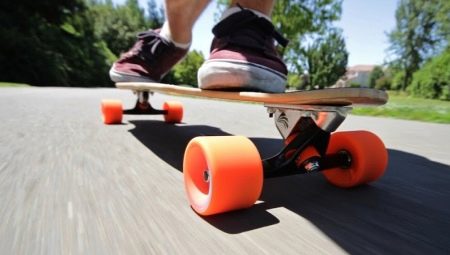
Many people confuse longboarding with skateboarding, and indeed, these activities are quite similar to each other. However, there are significant differences - primarily the board itself. In longboarding, it is of an elongated type, in comparison with a skateboard, the wheels are more overall, often the suspensions are also larger. Longboarding means mastering slalom, freeride. The ability to accelerate, ride at speed, do tricks, slide, pump, jump on the board - all this gives an unprecedented feeling.
Longboarding for beginners is more affordable than skateboarding. You can learn how to skate properly from scratch on your own. This will require a longboard, equipment and desire. The main thing is not to force things: before learning to ride, you need to learn to put your feet and stand correctly, turn, brake. That's why the initial stage of learning to ride a longboard may not seem too dynamic. But once you've mastered it, you'll have access to a host of amazing longboarding experiences.
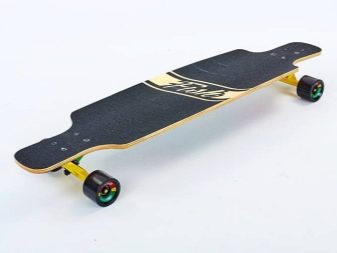
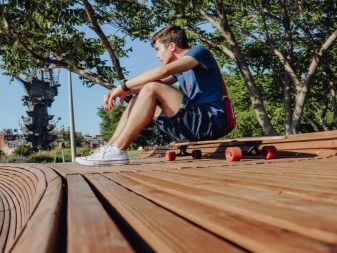
Required equipment
First of all, you should decide what goals you set for yourself:
- movement in urban environments - cruising;
- conquering a skate park;
- mastering large descents.
Longboard has several varieties depending on the length. Each has its own pros and cons:
- shortened ones are more maneuverable, turns are made faster, more comfortable, but they are not too safe in terms of stability;
- the elongated options reduce the risk of falls, but they are not as mobile.
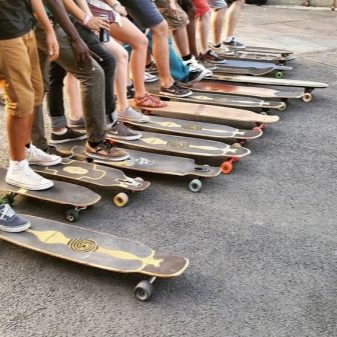
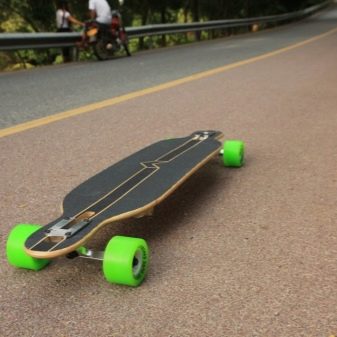
If you are just starting to master the board, get the elongated version - it is ideal for training.
Do not neglect protective equipment, even if you do not plan to ride extreme, learn tricks. At the initial stage, the risk of falls is quite high. You will need:
- a sturdy helmet that fits well on the head;
- special skate shoes with flat soles;
- elbow and knee protectors are optional but desirable.
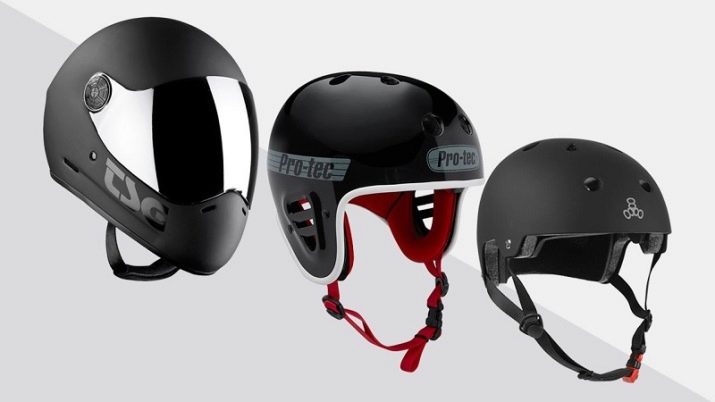
Learning stages
Elementary
After you have purchased everything you need, you can start learning to ride. The first step in mastering a longboard is knowing how to stand correctly on the board. The placement of the legs is mastered even before the placement on the sports equipment. Everything is simple here - the foot with which you step on the board is the guide. It will be located first, the second leg will be jogging. There are no rules here - it all depends on the comfort of the beginner. Most often, the guiding foot is the right.
The first steps on a longboard are made on the asphalt, preferably as even as possible. Before starting skiing, check for holes, slides, cracks, stones in front of you. Remember that even a small rock under the wheel can bring the longboarder to the ground. A common mistake is to stand on a standing board with both feet. The correct way to start is:
- the guiding leg is placed on the long;
- jogging slightly repelled.


All you need to master at this stage is to learn how to feel the board, feel the movement and establish balance. The knees bend in the process to help balance. The optimal position of the legs is with an orientation to the width of the shoulders.
Correct take off:
- toe forward;
- the number of shocks should not be large;
- no need to grind;
- the push must be strong;
- the jogging leg is placed on the foot, and not on the toe, a sharp movement is made.


How to take a basic position:
- feet are placed between the suspension bolts, wider than the shoulders;
- the leg of the guide type is brought forward, at an angle;
- jogging is placed perpendicular to the selected vector, long.
To start mastering this position is enough. As you become more confident, you can learn other starting positions. It is best to practice your balance on small, gentle descents. Spread your arms out and don't straighten your knees.
It is very important to learn how to balance, to keep your balance under control. If it is lost, focus on a straight line of motion to guide your vision.
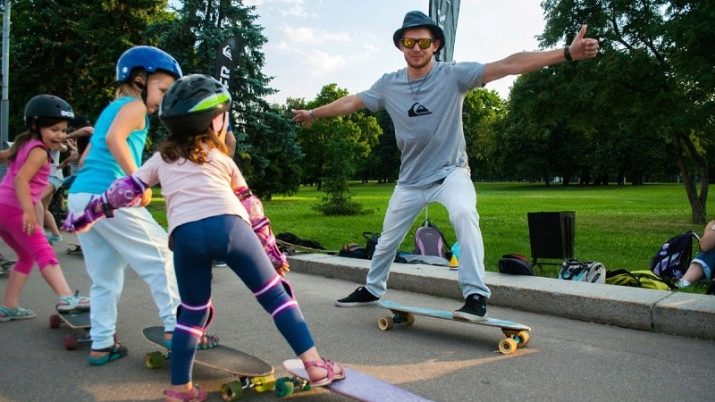
Basic
You should go to it when you feel quite confident on the board, know how to control balance, and push off well. You can start mastering overclocking:
- push off once strongly or several times in a calm mode;
- try not to strain the body, otherwise the balance will be disturbed;
- gradually increase the pace, push off more powerfully;
- one correct take off is enough to ride and balance for a long time.
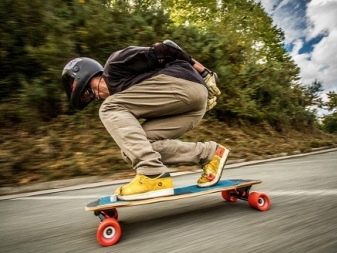
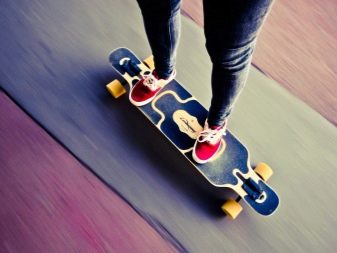
To ride well, you need to learn how to make turns, and a lot and confidently:
- just put that foot on the board towards which you need to roll;
- the feet are tilted back, the board is directed slightly inward or outward: to the right or to the left.
It is also important to learn how to slow down and stop. The easiest way to brake is with the foot, which is exposed to the ground, friction is created, as a result, the speed slows down. You can slow down in other ways:
- twisty turn: the body bends in different directions;
- straighten up and spread your arms to your sides to slow down.
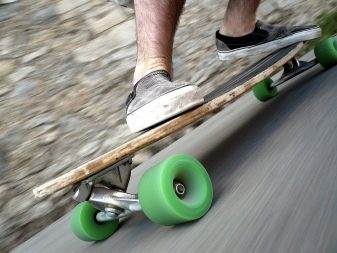
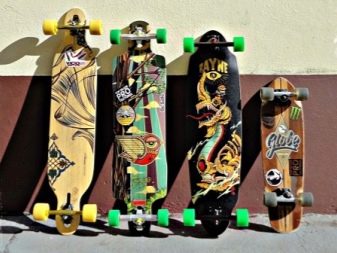
Slip
This stage is mastered when there is enough practice. First of all, you need to purchase special gloves with firm palms. Basic rules for sliding:
- the weight is transferred forward - on the guide type leg, the knees are slightly bent;
- the other leg is moved from the long for contact with the asphalt;
- slowly increase this contact;
- do not use a toe or heel for this purpose - you need the middle of the foot;
- start at slow speeds, gradually building up your pace.
It is important not to be afraid and to enjoy the ride, to enjoy the sensations. It should be remembered that boarding is associated with injuries. Failure to comply with safety rules, too active driving can lead to quite serious consequences. Very often, beginners are too confident and forget about vigilance.
Caution and attentiveness are the best qualities for a beginner longboarder. Therefore, do not neglect the recommendations of experts.
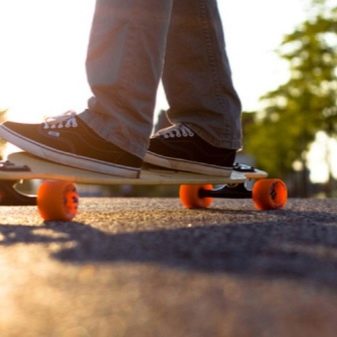

Recommendations
In order not only to get a lot of skiing impressions, but also to maintain your health, there are several important points to consider:
- be sure to purchase shoes with flat soles, otherwise you will never achieve perfect grip with a long;
- smooth skating is possible when using large-size wheels of a soft type;
- do not be lazy to check if there are any obstacles, holes, potholes, stones in your path, for this walk along the future route, carefully examining everything;
- never ride on roads where there are a lot of people or vehicles;
- when choosing a descent for development, stop at those that turn into a long smooth road, otherwise it will be difficult for you to stop;
- test the types of longs before buying - being on the board should be comfortable;
- at first you will have to fall a lot - you need to be ready for this and not get upset;
- it is very important to develop a good natural glide;
- do not do what is awkward or uncomfortable for you;
- be sure to buy special gloves with plastic palms.
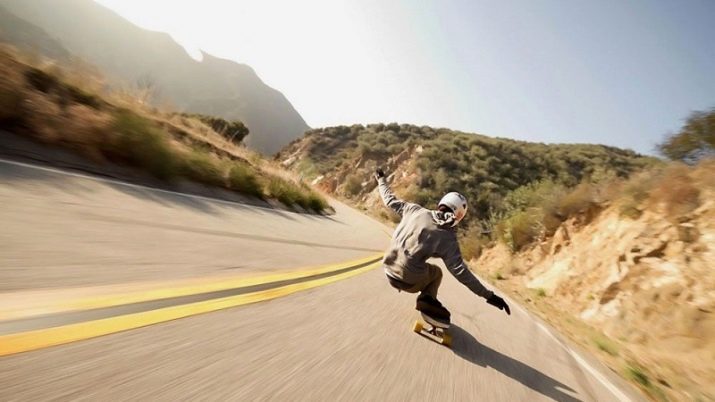
Important to remember:
- before accelerating, make sure that you can and can brake;
- the risk of injury is always great in this sport - be aware of this;
- use the utmost care when riding where people are walking;
- do not neglect the equipment.
For information on how to properly ride a longboard, see the next video.








